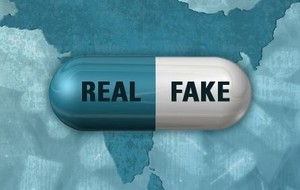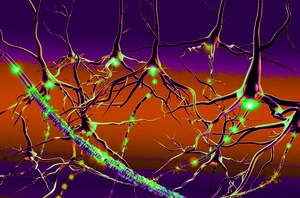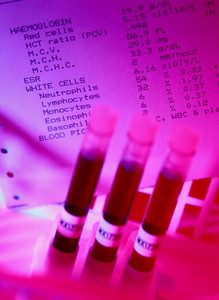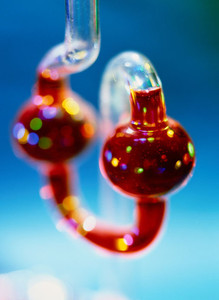Researchers from France describe and compare the haematological parameters and anaemia medications used in chronic kidney disease (CKD) patients undergoing haemodialysis, before and after switching between the iron-sucrose originator and an iron-sucrose follow-on version [1].
Switching between originator and follow-on iron-sucrose
Non‐Biological Complex Drugs/Research
|
Posted 22/04/2016
 0
Post your comment
0
Post your comment

The authors carried out an observational, single-centre, longitudinal study comparing the impact of changing from the originator intravenous iron-sucrose (Venofer), to an iron-sucrose follow-on version (Fer Mylan), then back to the originator iron-sucrose. The analysis compared retrospective data from three consecutive 26-week originator iron-sucrose treatment periods (P1, P2 and P3), versus a prospective 26-week follow-on iron-sucrose period (P4), followed by a further 26-week prospective period using the originator iron-sucrose (P5). Haemoglobin (Hb) was assessed every two weeks, while serum ferritin, transferrin saturation (TSAT) and C-reactive protein (CRP) were collected twice per period. The erythropoiesis stimulating agent (ESA) darbepoetin alfa was prescribed intravenously once every two weeks and intravenous iron was given once weekly, except for P5 where it was administered once every two weeks. Dose titration of ESA and intravenous iron was per institutional protocol to maintain Hb between 11.5 and 12 g/dL.
Sixty-six patients (68% male) with a mean age of 60 ± 15 years were analysed. Mean Hb levels remained stable and within the target range during treatment with the originator iron-sucrose (11.8 ± 1.0 g/dL) (P1 to P3) but decreased significantly after the switch to the follow-on iron-sucrose (11.3 ± 0.9 g/dL) (P4) (p <0.001). Upon switching back to the originator iron-sucrose, Hb target levels were again attained (11.8 ± 0.7 g/dL) (P5). During the P1 to P3 periods, TSAT remained stable (43.7 ± 8.5%) but decreased during the (P4) period (23.9 ± 9.5%) and returned to previous level (41.5 ± 10.8%) with the switch back to the originator iron-sucrose (P5). Cumulative ESA and intravenous iron doses were stable during P1 to P3, had to be increased by 27.1% and 30.3%, respectively during P4 and could again be decreased by 22.5% and 30.3% with the return to originator iron-sucrose during P5.
The authors concluded that the switch from originator iron-sucrose to the follow-on iron-sucrose preparation led to destabilization of the previously well-controlled population of haemodialysis patients, with a return to stable levels after a switch back to the originator iron-sucrose. The switch resulted in an increase in total anaemia drug treatment costs, with higher iron and ESA doses required with the follow-on iron-sucrose. The authors therefore say that caution should be exercised before substituting originator iron-sucrose with a follow-on iron-sucrose in the absence of therapeutic equivalence data.
Abstracted by Professor Jacques Rottembourg of the Department of Nephrology, Groupe Hospitalier Pitié-Salpêtrière, Paris, France.
Conflict of interest
The authors of the research paper [1] declared that Vifor (International) and Fresenius Medical Care France financially supported the study and the statistical analysis. One of the authors also received a consultancy fee from Vifor Pharma.
For full details of the authors’ conflicts of interest, see the research paper [1].
Editor’s Comment
Currently, ‘follow-on’ versions of non-biological complex drugs (NBCDs), such as iron carbohydrates, liposomal drugs and glatiramoids, and which also include some synthetic proteins and polypeptides, are approved under the generics pathway.
However, like biologicals, NBCDs consist of different (closely related) structures that cannot be fully quantitated, characterized or described by physicochemical analytical tools. The composition and quality of NBCDs are dependent on the manufacturing process and controls – just as is the case with biologicals. Therefore, approval of follow-on NBCDs via generics or biosimilars pathways may not be appropriate.
The European Medicines Agency has recognized the complications associated with approval of originator NBCDs and has in the past therefore requested extra information to support follow-on NBCDs on a case-by-case basis.
EMA has also issued reflection papers outlining the extra data required for approval of follow-on versions of iron-based nano-colloidal products [2] and intravenous liposomal products [3].
Related article
Regulations for follow-on NBCDs
References
1. Rottembourg J, Guerin A, Diaconita M, Kadri A. The complete study of the switch from iron-sucrose originator to iron-sucrose similar and vice versa in hemodialysis patients. J Kidney 2016;2:1. doi.org/10.4172/jok.1000110.
2. GaBI Online - Generics and Biosimilars Initiative. EMA publishes first reflection paper for follow-on versions of iron-based nano-colloidal productsNBCDs [www.gabionline.net]. Mol, Belgium: Pro Pharma Communications International; [cited 2016 Apr 22].
3. GaBI Online - Generics and Biosimilars Initiative. EU guidelines for follow-on NBCDs [www.gabionline.net]. Mol, Belgium: Pro Pharma Communications International; [cited 2016 Apr 22]. Available from: www.gabionline.net/Non-Biological-Complex-Drugs/Guidelines/EU-guidelines-for-follow-on-NBCDs
Permission granted to reproduce for personal and non-commercial use only. All other reproduction, copy or reprinting of all or part of any ‘Content’ found on this website is strictly prohibited without the prior consent of the publisher. Contact the publisher to obtain permission before redistributing.
Copyright – Unless otherwise stated all contents of this website are © 2016 Pro PharmaCommunications International. All Rights Reserved.
Biosimilars and follow-on NBCDs for MS in Europe, the US and Canada

Non‐Biological Complex Drugs/Research Posted 19/01/2018
Scientific and regulatory considerations for follow-on versions of complex drug products containing nanomaterials

Non‐Biological Complex Drugs/Research Posted 05/05/2017
Follow-up studies needed to ensure safety for follow-on NBCDs

Non‐Biological Complex Drugs/Research Posted 31/03/2017
The best selling biotechnology drugs of 2008: the next biosimilars targets







Post your comment